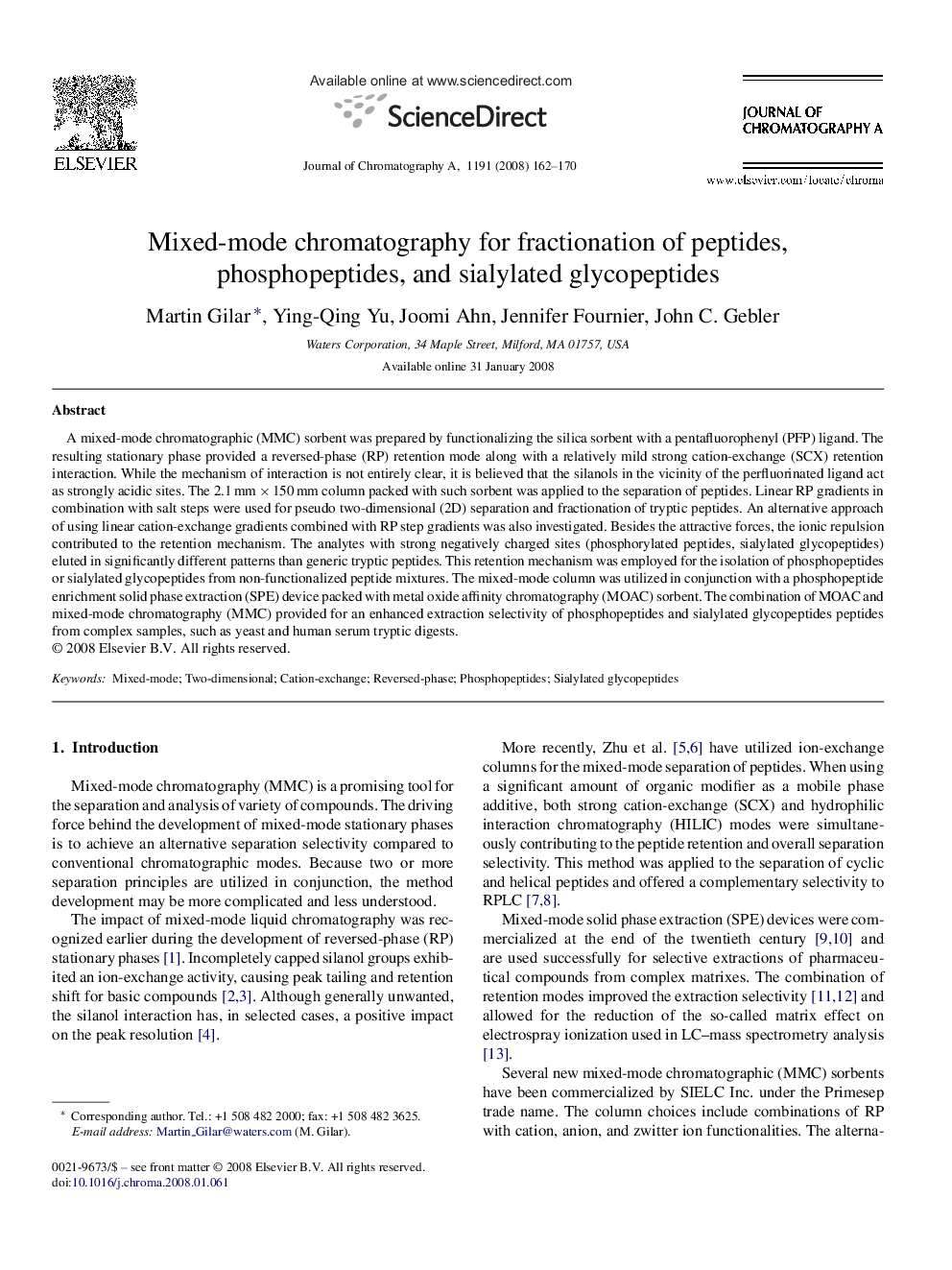| Article ID | Journal | Published Year | Pages | File Type |
|---|---|---|---|---|
| 1205573 | Journal of Chromatography A | 2008 | 9 Pages |
A mixed-mode chromatographic (MMC) sorbent was prepared by functionalizing the silica sorbent with a pentafluorophenyl (PFP) ligand. The resulting stationary phase provided a reversed-phase (RP) retention mode along with a relatively mild strong cation-exchange (SCX) retention interaction. While the mechanism of interaction is not entirely clear, it is believed that the silanols in the vicinity of the perfluorinated ligand act as strongly acidic sites. The 2.1 mm × 150 mm column packed with such sorbent was applied to the separation of peptides. Linear RP gradients in combination with salt steps were used for pseudo two-dimensional (2D) separation and fractionation of tryptic peptides. An alternative approach of using linear cation-exchange gradients combined with RP step gradients was also investigated. Besides the attractive forces, the ionic repulsion contributed to the retention mechanism. The analytes with strong negatively charged sites (phosphorylated peptides, sialylated glycopeptides) eluted in significantly different patterns than generic tryptic peptides. This retention mechanism was employed for the isolation of phosphopeptides or sialylated glycopeptides from non-functionalized peptide mixtures. The mixed-mode column was utilized in conjunction with a phosphopeptide enrichment solid phase extraction (SPE) device packed with metal oxide affinity chromatography (MOAC) sorbent. The combination of MOAC and mixed-mode chromatography (MMC) provided for an enhanced extraction selectivity of phosphopeptides and sialylated glycopeptides peptides from complex samples, such as yeast and human serum tryptic digests.
